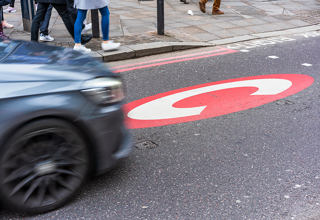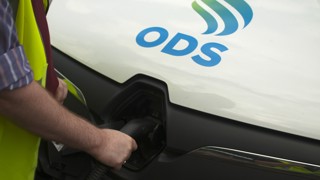Fleets need to be clear on how their operations will be affected by the introduction of clean air zones (CAZs) in order to minimise any cost implications or disruption.
This includes knowing when they will be introduced, where they are and how long they will be in place, Andrew Benfield, group director of transport at Energy Saving Trust, told Fleet200 members.
“This is all pretty basic stuff, but the point has been made time and time again that companies are making long-term investments in expensive vehicles, so if they want to comply, the more certainty they get, the sooner the better,” he said.
CAZs will be introduced in Birmingham, Leeds, Nottingham, Derby and Southampton for 2020, and will use charges to discourage the most polluting vehicles, such as older buses, taxis, coaches and lorries, from travelling through the areas.
This also means that drivers of diesel cars could face charges for driving non-compliant vehicles.
A further 23 local authorities are required to create plans based on single road exceedances.
EST, together with Fleet News and the BVRLA, has held a series of roundtables about the introduction of CAZs with local authorities and fleets, and Benfield said these events have enabled a better understanding of the challenges that councils and cities are facing.
“They are really being put in a hotspot here,” says Benfield. “They have got a political issue that is about local lives, but they have also got to maintain thriving economies to support their constituencies.
“Local authorities and city councils know the critical role that fleet movement and transport plays in the local communities, but they have been handed a bit of a political time bomb in terms of the impact this is having on lives.
“They are trying their best in a difficult situation. Leeds is one of the best examples because it has been in clean air zone consultation for some time now, but they have got to think about issues like displacement.
“If they put a CAZ in, what happens to the vehicles? Can they just go round it, so they are just shifting the vehicle round to somewhere else? Just the issue of drawing a line around the area is a charged one.”
Benfield said a number of positive ideas had come out of the roundtables about how to mitigate the impact of CAZs on fleets and operators, such as tapering the charges to tackle the dirtiest vehicles first, flexing the charging system, and streamlining payments if the vehicle has to move between different CAZs.
He added that some fleets had discussed changing their operations and moving to more night-time delivers for retail businesses to minimise the impact of the zones on their companies.
MORE: To receive Andrew Benfield's presentation email jeremy.bennett@bauermedia.co.uk.






















Login to comment
Comments
No comments have been made yet.